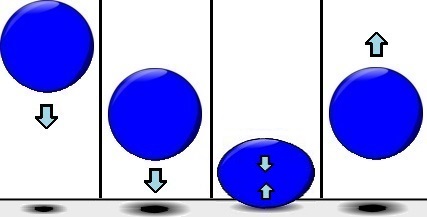Energy
The greek word energeia essentially means the driving, the acting. All conceivable processes, changes and movements have to do something with energy. The special thing about this is that energy exists in very different forms of energy which can be transformed from one form into another.
Energy can exist in a very broad range of forms of energy:
- A falling stone has got motion energy (kinetic energy).
- Electric current has got electric energy.
- A battery has got chemical energy.
- A tensioned spring has got spring tension energy.
- The sun has got light energy (radiation energy).
- Objects on a certain height have got positional energy (potential energy).
- Warm objects have got heating energy (thermal energy).
In case of all conceivable processes on earth energy changes its form to different degrees:
- While a car is breaking, kinetic energy is transformed into thermal energy.
- In a coal-fired power station chemical energy is transformed into thermal energy and then into kintetic energy while burning coal. The kinetic energy generated is then partially transformed into electric energy.
While a rubber ball is falling, its potential energy is transformed in kinetic energy. When it hits the ground, its potential energy is transformed completely. At the same moment its kinetic energy is transformed into tension energy. The rubber ball is pushed apart again so that its tension energy is retransformed into kinetic energy. While it is rising upwards, its kinetic energy is transformed into potential energy again.

It is essential that energy can never be lost. No matter in which process there is not any part of energy which is used up. This is called the principle of conservation of energy. The bobbing movement of the rubber ball only comes to a standstil because a part of the energy has also been transformed into thermal energy.
Energy is measured in the unit of Joule [J].
- If you ride your bycicle at a speed of 20 km/h, you approximately have a kinetic energy of 10.000 J.
- if you look at the imprinted texts on food, you will see of how much energy your food consists. 100g of sugar, for example, have got a chemical energy of 1.700kJ, respectively 1.700.000 J. (k means kilo, respectively 1000)
- a common 1,5V battery can store about 13.500 J.
